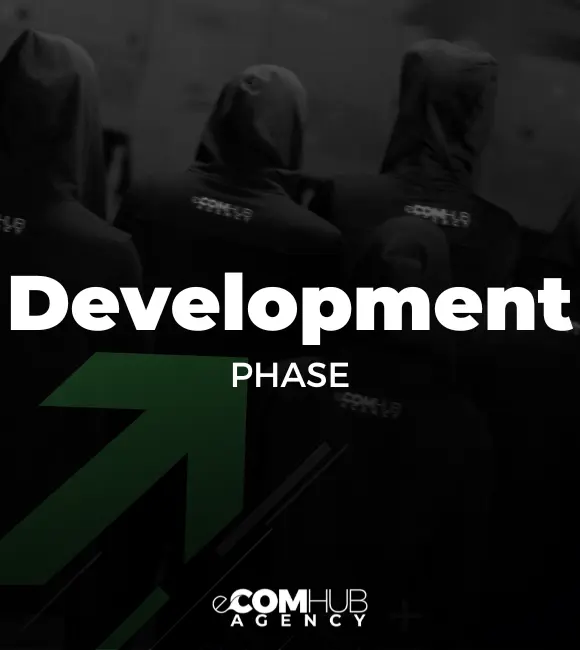Welcome to Phase 2: Copywriting
Learn how to write a winning landing page, complete with a template and examples!
What you’ll learn

You will learn how to structure your landing page’s copy.

You will learn the best formulas for every copy piece.

You will have a template that you can reuse in the future.
Copywriting
Click on each checkpoint to see more information about how to best implement it.
START HERE: GET YOUR LANDING PAGE COPYWRITING TEMPLATE
…
1. Clearly define the goal of the landing page (is it to collect emails, book calls, or get sales?).
Clearly define the goal of the landing page (is it to collect emails, book calls, or get sales?).
2. Have a single ideal customer in mind, write in the same way as you would pitch to your ideal customer face-to-face.
Have a single ideal customer in mind, write in the same way as you would pitch to your ideal customer face-to-face.
3. If you have different buyer personas or customer segments, create landing pages tailored to each group.
If you have different buyer personas or customer segments, create landing pages tailored to each group.
4. Feature the #1 benefit with a singular focus in the main headline (focused on WHAT).
Feature the #1 benefit with a singular focus in the main headline (focused on WHAT).
5. Explain how the #1 benefit is achieved in the subheadline (focused on HOW).
Explain how the #1 benefit is achieved in the subheadline (focused on HOW).
6. Feature the #1 problem with a singular focus in the problem section's headline.
Feature the #1 problem with a singular focus in the problem section’s headline.
7. List the other key problems in the problem section's subheadline.
List the other key problems in the problem section’s subheadline.
8. Early in the page, aim to resonate and connect with your target audience not sell to them.
Early in the page, aim to resonate and connect with your target audience not sell to them.
9. When you first introduce your offer, present the end result (paint the dream) not explain the process.
When you first introduce your offer, present the end result (paint the dream) not explain the process.
10. Explain the HOW (the process) in subsections where you feature each key feature/benefit in sub-sections.
Explain the HOW (the process) in subsections where you feature each key feature/benefit in sub-sections.
11. Use different formatting, such as bullet points, bold text, or color, to guide the reader through the copy.
Use different formatting, such as bullet points, bold text, or color, to guide the reader through the copy.
12. Use data and statistics to support your claims and make the offer more credible.
Use data and statistics to support your claims and make the offer more credible.
13. Keep copy (not the page but each copy piece) simple and short, do it even if you're targeting ultra-niche specialists.
Keep copy (not the page but each copy piece) simple and short, do it even if you’re targeting ultra-niche specialists.
14. Use the FAQ not to educate but sell - clear objections, and remove friction (e.g. "Will this work for achieving my specific goal?").
Use the FAQ not to educate but sell – clear objections, and remove friction (e.g. “Will this work for achieving my specific goal?”).
15. Have CTAs after every main section (switch up between full color, outlined-only, and text-only buttons).
Have CTAs after every main section (switch up between full color, outlined-only, and text-only buttons).
16. READ your copy out loud, it should sound like a pitch you would tell to a real person standing in front of you.
READ your copy out loud, it should sound like a pitch you would tell to a real person standing in front of you.
17. Use ChatGPT for brainstorming sessions (even pro copywriters use it).
Use ChatGPT for brainstorming sessions (even pro copywriters use it).
18. Implement split-testing, starting with the main headlines, subheadlines, and CTAs.
Implement split testing, starting with the main headlines, subheadlines, and CTAs.
19. Implement scarcity & urgency but only if it's based on actual factors like your schedule, or maximum capacity.
Implement scarcity & urgency but only if it’s based on actual factors like your schedule, or maximum capacity.
Ready for the next phase?
…
Or jump to any phase!
While we suggest you follow each phase in order, step-by-step, for the best results, you can jump to any phase at any time and create your own learning flow.

Phase 1: Structuring
Learn how to structure a winning landing page, what sections to include, and their specific order to create the perfect customer journey. You’ll also have a template to ease the process!

Phase 3: Development
Learn how to build a winning landing page even if you have little to no technical skills. Phase 3 is focused on no-code tools and foundational practices, so you don’t need to hire a developer.

Phase 4: Design
Learn the DOs and DONTs of designing an aesthetic landing page. If you keep these foundational principles in mind, you’ll have a landing page that you’ll be proud to show.

Phase 5: Pre-launch
Learn how to set yourself up for success by developing your pre-launch strategy. Phase 5 will give you a brief insight into how to create your first ad campaigns and ensure they’re successful!
Ecomhub Agency
We help entrepreneurs and brands grow and scale their businesses.


